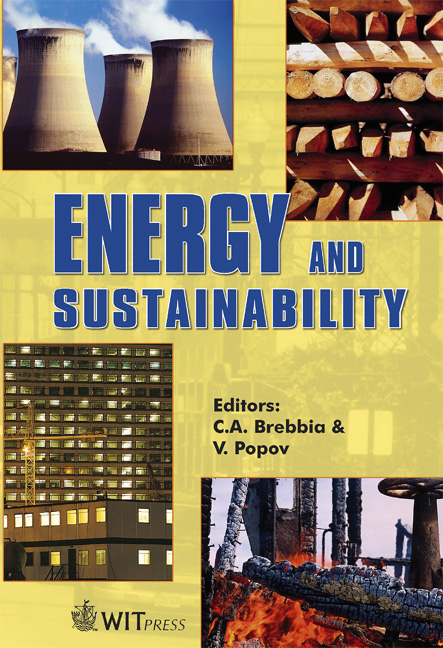Comparison Of Energy Performance Between Passenger Cars And Motorcycles In Taiwan By Decomposition Analysis
Price
Free (open access)
Transaction
Volume
105
Pages
9
Published
2007
Size
540 kb
Paper DOI
10.2495/ESUS070201
Copyright
WIT Press
Author(s)
I. J. Lu, S. J. Lin & C. Lewis
Abstract
Transportation can facilitate the mobility of people and goods over space and time, but it also accelerates energy consumption, and it may cause serious environmental pollution. Based on relevant energy and emission databases, passenger cars and motorcycles are major sources of energy consumption and pollutant emissions in Taiwan. This paper aims to identify the direct and intricate characteristics affecting the energy consumption and performance of passenger cars and motorcycles in Taiwan. Decomposition analysis was used to quantify the relative contributions from energy intensity, the vehicle kilometers per unit car, vehicular structure share, vehicle expansion and economic productivity from 1990 to 2004. The results indicated that the number of passenger cars and motorcycles increased by 138.2% and 62.7% over the 14 years. Also, the increases of aggregate fuel consumption were 4.1 million kiloliters and 1.4 million kiloliters, respectively. Furthermore, the results of decomposition analysis indicated that the economic development and energy intensity were two key factors for the rise of vehicle’s fuel consumption, while vehicle intensity had a significant positive contribution to energy conservation. Compared with the increased effect on motorcycles’ fuel demand, the ratio of vehicle kilometers per unit car to passenger car was improved because the growth rate of vehicle-km was lower than the number of passenger cars. The share of passenger cars in road transportation increased from 24.6% to 32.7% while it declined in motorcycles from 68.4% to 61.3%, which means the \“vehicular structure share” factor had a negative effect on passenger cars’ fuel demand and an improvement in motorcycle energy consumption. To improve the energy intensity, the strategies include proper fuel/car taxation, and enhancing high occupancy vehicle measures by regulation and economic incentives. Also, increased use of the mass rapid transit system (MRT) and combining road–rail networks would improve efficiency. Keywords: decomposition analysis, economic growth, energy consumption, motorcycle, passenger car.
Keywords
decomposition analysis, economic growth, energy consumption, motorcycle, passenger car.





